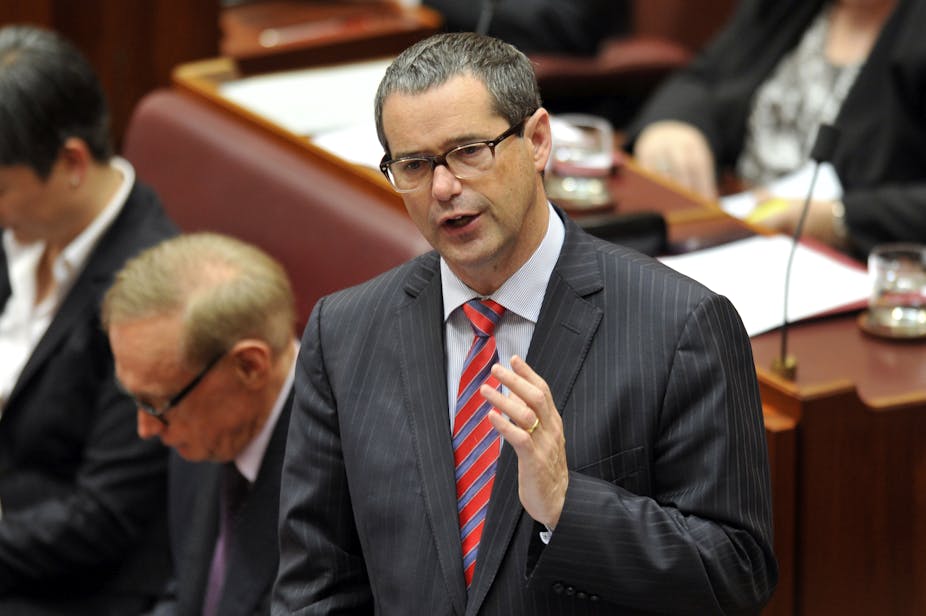Late on Friday 30 November, the day after the last parliamentary sitting day for the year, the government released its first official response to the Convergence Review. Seven months after the Review’s Final Report was made public, and eight months after it was submitted to Minister Conroy, we finally know a little more about the government’s plans for media reform going in to election year.
There is no mention of what is clearly the most divisive and difficult media policy issue: the future of press regulation. Instead, the Minister’s press release concentrates on the slightly less controversial issue of Australian content on television. Although it flags a range of new measures, it also confirms what many have long suspected: this government, like many before it, is reluctant to upset the commercial free-to-air broadcasters (FTAs). In fact, it seems as though the government has gone out of its way to please the operators of the nation’s most influential medium.
The government has proposed to immediately extend the licence fee rebate originally granted to the FTAs in February 2010 for another year. Given that licence fees are due to be paid this month, it is significant that the announcement was made on the last day of November. As a result, the FTAs will save over $125 million now, with further savings on the horizon as the fee will be permanently reduced by 50% to a maximum of 4.5% of revenue, probably in time for next year’s payment.
In return, an Australian content quota will be imposed on the FTAs’ digital multichannels (7Two, 7Mate, Gem, Go, One and Eleven) for the first time. This move has long been demanded by the production industry and others. The Minister for the Arts, Simon Crean, flagged the trade-off of licence fee cuts in exchange for enhanced local content requirements earlier in November.
But the government’s proposal even goes further than the Convergence Review recommended. Under the new proposals, the FTAs will be required to screen an increasing number of hours of Australian content on their multichannels over the next three years. In 2013, the quota is 730 hours. In 2014, it is 1095 hours. In 2015, it is 1460 hours. This may appear to be a significant new imposition, but all, however, is not quite as it seems.
First, the requirements are for each broadcaster, not each channel. In other words, the FTAs can spread the hours across their two multichannels. When the figures are broken down, the true significance of the move is revealed. In 2013, each FTA must screen 730 hours. That is 730 hours of Australian content between 6am and midnight out of an annual maximum of 13140 broadcast hours (6570 hours per channel). That equates to around 5.5% Australian content per year, per FTA, or around two hours a week spread over two channels. The equivalent figures for 2014 and 2015 are roughly 8.5% (or 3 hours per week across two channels) and 11% (around 4 hours per week across two channels). Compare this with the current requirement that the FTAs main channels must screen 55% Australian content, with additional sub-quota requirements.
Second, there are no sub-quota requirements for screening particular genres of programming, and there is no requirement to screen first-run content. Unsurprisingly, this has upset industry bodies such as the Screen Producers Association of Australia and Equity. The new head of SPAA, Matthew Deaner, was “outraged” by the announcement, while Equity’s Sue McCready demanded that an additional sub-quota of 40 hours of drama be added to the new regulations.
Third, the FTAs are already exceeding these requirements. In fact, the regulations will allow them effectively to schedule less Australian content than they currently screen. In a submission to the Convergence Review in October 2011, the FTA lobby group FreeTV Australia noted that “over 6400 hours of Australian has been shown on the digital channels this year”. Even in 2015, the new regulations will only require the FTAs collectively to screen a minimum of 4380 hours – more than 2000 hours less than they screened from January to October, 2011.
The licence fee cuts and the multichannel quotas were not the only victories for the FTAs. Minister Conroy also announced that “no spectrum or broadcast licences will be made available to enable a fourth free-to-air television network”, meaning no new broadcasting competitors for the FTAs. While this formed part of one of the Convergence Review’s recommendations, it went further, proposing that the channel capacity on the sixth planned television multiplex be allocated to “new and innovative services”. The Minister has postponed any decision on uses of the sixth channel.
Lastly, the government has also removed the “75% audience reach rule” that limited holders of commercial television broadcasting licences to an area containing a maximum of 75% of the Australian population. This change has long been mooted, and was recommended by the Convergence Review in line with the views of FreeTV Australia, Telstra and News Limited that the rule was “increasingly anomalous in a borderless media environment”.
All in all, the government has proposed a series of changes that provide substantial benefits to the FTAs. But the benefits for the production industry, subscription television providers, and most importantly — to audiences — are limited.

